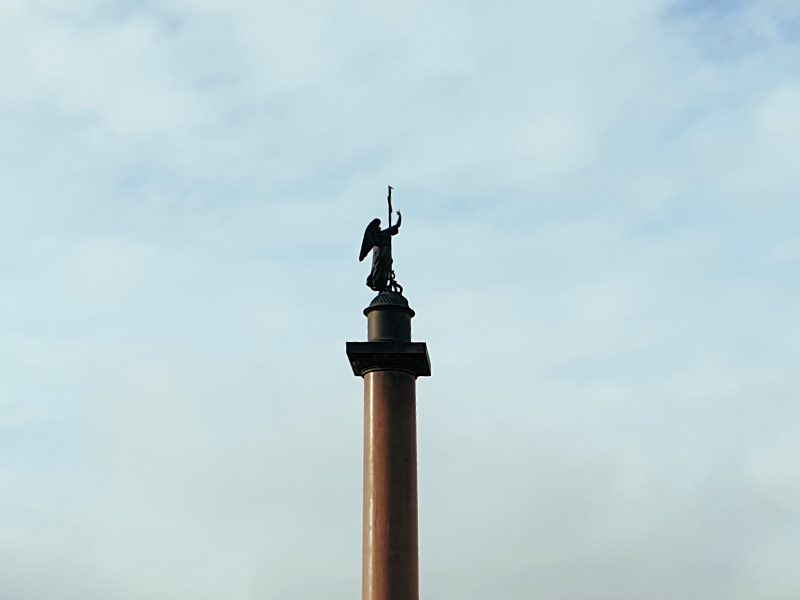Palace Square is the most famous place in St. Petersburg, besides Nevsky Prospect. It is a significant place for the whole Russia.
Winter Residence of Russian Tsars
But back in the times of Peter the Great (early 18th century) it was called Admiralty Meadow. The reader can imagine what it looked like. The Winter Palace was completed here by the architect Rastrelli in 1762. It took around 10 years to make the open space in front of the Imperial Palace look decent. For the first time the name “Palace Square” appeared in the chronicles of St. Petersburg in 1770ies.
The history of St. Petersburg was tightly linked with the lives of the Russian tsars starting from Peter 1. The emperors and empresses lived here, ruled the country, made pivotal decisions. Here they died of natural causes or as a result of coup-d’état.
The opulent Winter Palace that we can see facing Palace Square is the fifth winter residence of the Imperial family in St. Petersburg. The Winter Palace was built on the project of F.B. Rastrelli for Empress Elizabeth in 1762. The empress didn’t have a chance to use the new lavish residence – the palace was finished when she died. It was used by the Russian tsars until the February Revolution in 1917.
If you walk along the façade of the Winter Palace in the direction of Millionnaya Street you’ll pass the pale green Small Hermitage building. It was projected by architect Yuri Felten on the order of Catherine the Great. Initially it was called “the Hermitage Pavilion” as, strictly speaking, it consisted of two pavilions connected with 2 galleries. Note: the Winter Palace and Small Hermitage are connected with covered passages on the level of the second storey: Catherine the Great hated staircases and avoided using them.
Next to the Small Hermitage there’s the New Hermitage building constructed almost a century later – Nicholas 1 commissioned Leo von Klenze to build a decent home for the Imperial Faberge Museum. So, unlike the Winter Palace and Small Hermitage, the New Hermitage was meant as a museum building from the very beginning. The entrance to the New Hermitage is remarkable and quite often is regarded as an unofficial symbol of St. Petersburg – 10 granite atlantes figures holding the portico. Rub the toes of atlantes for good luck and return to Palace Square.
Alexander Column
In the middle of the square there’s an amazing triumphal monument to the victory over Napoleon. It’s called Alexander Column. The idea to create a triumphal monument belonged to architect Carl Rossi, who worked on Palace Square ensemble in the first half of the 19th century. It was a French architect Auguste Montferrand who actually turned the idea into reality.
The granite column is a single piece that was cut out from a huge rock. It weights 704 tons (roughly equal to 1322700 pounds) and is 47,5 m high. The angel holding a sword looking cross on top the column is one more symbol of St. Petersburg. It is considered to have portrait likeness with Emperor Alexander 1.
General Staff Building
Opposite the Winter Palace there’s a magnificent yellow building. Its impressive 580 metre long façade in the shape of a wide arch seems to embrace Palace Square. This building was designed by architect Carl Rossi for the General Military Staff and two ministries: the Ministry of Finance and that of Foreign Affairs. The building is divided into 2 parts connected with a remarkable triumphal arch in the middle.
Part of the General Staff building still belongs to the army. If the viewer faces the General Staff building, the part to the left from the arch belongs to the Hermitage Museum. Visitors come here to see the world famous collections of Impressionists and Postimpressionists. Here the Hermitage has an interactive space and arranges interesting exhibitions.
One can leave Palace Square walking through the archway to Nevsky Prospect. Turn back to get one of the most striking views of the square framed with the triumphal arch.







